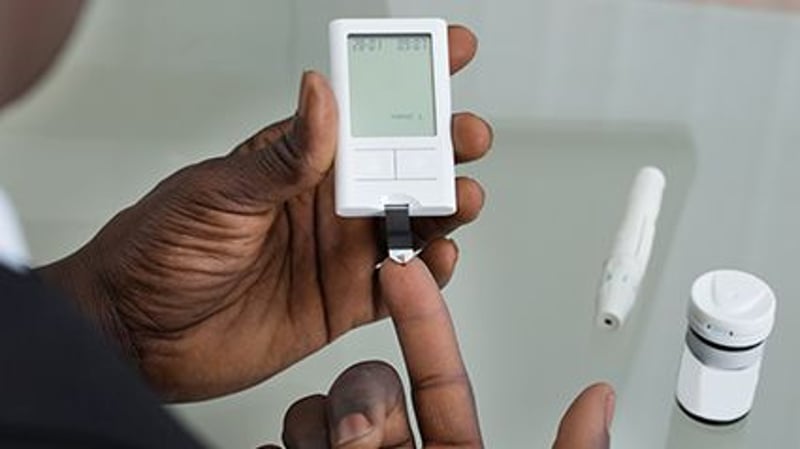Get Healthy!

- Amy Norton
- Posted September 22, 2022
Big Studies Test Effectiveness of Common Diabetes Meds
Two common diabetes medications seem to outperform two others when it comes to controlling blood sugar levels, a large U.S. trial has found.
The trial of more than 5,000 people with type 2 diabetes found that two injection medications -- a long-acting insulin and liraglutide (Victoza) -- typically worked better than two oral drugs in keeping blood sugar levels in check.
Over five years, patients taking either injection treatment spent more time with their blood sugar in the recommended range -- an average of six extra months.
Still, most study patients were unable to meet that goal for the long haul. Experts said it underscores how difficult that task is for people with diabetes.
"Ultimately, the treatment combinations did not maintain optimal A1C levels in many patients for the long-term management of type 2 diabetes," said researcher Dr. Henry Burch of the U.S. National Institute of Diabetes and Digestive and Kidney Diseases (NIDDK).
A1C is a measure of a person's average blood sugar level over the past three months. When people have diabetes, the goal is to keep A1C below 7%.
In the trial, 71% of patients could not meet that target across the five-year follow-up.
More than 37 million Americans have diabetes, the vast majority of whom have type 2, according to the NIDDK. In that form of the disease, the body loses its ability to properly use insulin, a hormone that shuttles sugars from food into body cells to be used for energy.
As a consequence, sugar builds up in the bloodstream, which can damage blood vessels and nerves over time. Many people with diabetes develop complications such as heart disease, kidney failure, nerve damage in the feet and legs, and potentially blinding eye disease.
Controlling blood sugar is key to reducing those risks. To do that, most people with type 2 diabetes take the oral drug metformin, along with diet changes and exercise.
The new findings -- published Sept. 22 in the New England Journal of Medicine -- come from a trial launched almost a decade ago and funded by the NIDDK. The goal was to determine which diabetes medications, when added to metformin, were most effective at helping patients maintain the recommended A1C target.
Just over 5,000 U.S. adults with type 2 diabetes were randomly assigned to add one of four treatments: insulin glargine (Lantus), a long-acting synthetic insulin; liraglutide; glimepiride (Amaryl), which belongs to a class of drugs called sulfonylureas; or sitagliptin (Januvia), a DPP-4 inhibitor.
Over five years, patients on insulin or liraglutide were most successful at keeping their A1C on target. Around 67% saw their blood sugar go above that target at some point, versus 72% of glimepiride patients and 77% of sitagliptin patients.
On average, patients on the injection treatments had about six extra months in target range, compared to the sitagliptin group.
Patients on all treatments tended to lose weight or remain stable, but weight loss was greatest with liraglutide, which helped people shed an average of 7 pounds. (A different formulation of the drug, sold as Saxenda, is approved as a weight-loss aid.)
On balance, though, no treatment was a home run.
An "important takeaway" from the trial, Burch said, is that when people are not reaching their A1C target, they and their doctors should be open to switching or adding medications -- as well as making healthy lifestyle changes.
There is no one-size-fits-all strategy, according to a diabetes expert who was not involved in the trial.
In the years since the study began, guidelines have put greater emphasis on the importance of individualized treatment, said Dr. Roeland J.W. Middelbeek, from the Joslin Diabetes Center in Boston.
For any one patient, he said, there are multiple factors to consider in making medication choices -- including coexisting health conditions like heart or kidney disease, whether weight management is a goal, and medication costs.
So for patients, Middelbeek said, it's important to work one-on-one with your doctor to figure out the best treatment plan.
There have also been other changes since the trial launched in 2013, the researchers point out. A new group of diabetes drugs, called SGLT2 inhibitors, are now available. They include medications like canagliflozin (Invokana), dapagliflozin (Farxiga) and empagliflozin (Jardiance).
And in the past few years, recommendations have come out supporting SGLT2 inhibitors and GLP-1 receptor agonists (which include liraglutide) as preferred options for patients who have existing heart or kidney disease.
But managing diabetes, and preventing its complications, takes more than blood sugar control. Burch said it's also critical to rein in high blood pressure and high cholesterol, to quit smoking and to aim for a healthier weight.
More information
The U.S. National Institute of Diabetes and Digestive and Kidney Diseases has an overview of type 2 diabetes.
SOURCES: Henry Burch, MD, program director, Division of Diabetes, Endocrinology and Metabolic Diseases, U.S. National Institute of Diabetes and Digestive and Kidney Diseases, Bethesda, Md.; Roeland J.W. Middelbeek, MD, staff physician, assistant investigator, Joslin Diabetes Center, and instructor, Harvard Medical School, Boston; New England Journal of Medicine, Sept. 22, 2022

